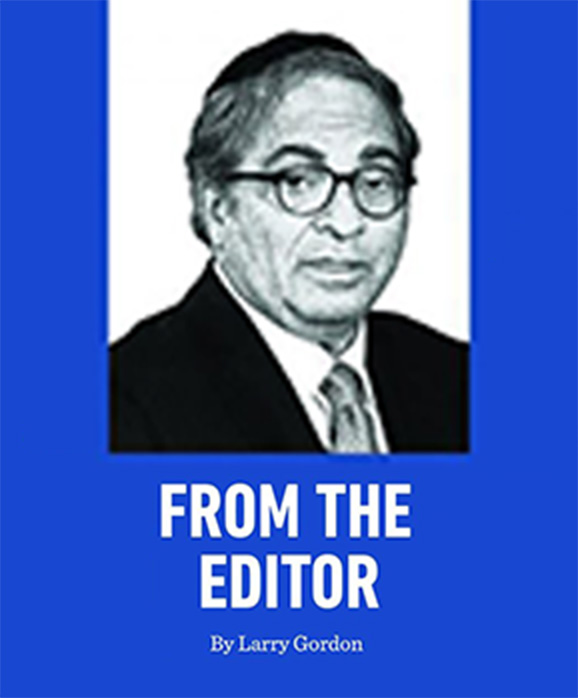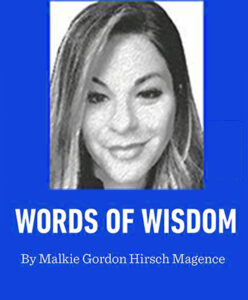The Sharp River
Although the Book of Numbers delineates the Holy Land’s eastern border as following the Jordan River (Num. 34:12), the Book of Deuteronomy envisions a Greater Israel that stretches in the east all the way to the Euphrates River—“until the Great River, the River Euphrates” (Deut. 1:7). The Book of Exodus likewise implies this more expansive vision, stating that the land that the Jews are destined to conquer should reach “until the river” (Ex. 23:31), which Targum Onkelos and Rashi identify as referring to the Euphrates. As is well-known, the center of the Ancient World and the so-called “cradle of civilization” was Mesopotamia, a Greek term that literally means “the country between two rivers”—the land between the Euphrates and the Tigris. The Tigris River is known in Biblical Hebrew as Chidekel, but in later Hebrew is referred to as Diglat. In this essay, we explore these two synonyms for the mighty river that defines the eastern border of Mesopotamia, looking at their etymological bases and seeing how the terms came into being.
Let’s talk about the hydronym (that is, a technical onomastic term for the name of a body of water, like a river) Chidekel. The river-name Chidekel (sometimes rendered Hiddekel in English) appears twice in the Bible: The first time is in the Creation narrative, wherein the Bible reports that four rivers exited from Eden, the third of which was named Chidekel—that is, the river east of Assyria (Gen. 2:14). The other time this river appears is in the Book of Daniel, as Daniel relates that one of the visions he saw was presented to him “when I was next to the Great River that is Chidekel” (Dan. 10:4). In that second verse, the name of the river is actually vocalized slightly differently as Chidakel, but that results from a grammatical consideration pertaining to segolate words that appear at the end of a verse, whose cantillation calls for morphing the segol into a kamatz.
Rabbi Aharon Marcus (Keset HaSofer to Gen. 2:11 and Barzilai p. 127) contends that the name Chidekel is an ancient Hebrew quadriliteral, even though, in general, Hebrew words only use roots comprised of three letters or less. He further conjectures that the root of Chidekel is actually chet-dalet-kuf, with the additional lammed at the end as radical to the core root. He lists other examples of four-letter roots in Hebrew that are really comprised of a three-letter core and a final lammed, including barzel (“iron”), karsul (“ankle”), chanamal(“grasshoppers/hail”), arafel (“darkness”), carmel (“orchard/fresh ears of grain”), chargol (“grasshopper”), and givol (“bud”). His exact way of explaining the meaning of the triliteral chet-dalet-kuf and how it relates to the Tigris River is not so clear.
That said, the rabbis use a different hydronym in reference to the Tigris River: Diglat. For instance, Targum Onkelos (to Gen. 2:14) renders the Biblical Hebrew word Chidekel as Diglat. This Aramaic name Diglat also appears in Targum to Nah. 1:12 (even though Chidekel does not appear in the Bible’s original Hebrew text there). Likewise, in the various places where the Talmud refers to the Tigris River, it is always known as the Diglat: The Talmud (Bava Kamma 30a) relates that pious men would make sure to dispose of glass shards and thorns in a way that they do not pose a public hazard. In that context, it is related that Rava used to throw such things into the Diglat River. When Rava prayed for rain, the rain fell in such abundance that the water-gutters of Mechoza flooded all the way to the Diglat River (Taanit 24b). There are several other instances in which the Talmud mentions the river Diglat in conjunction with the Amoraic sage Rava (Eruvin 57b, Moed Katan 25b, Yevamot 121a). The Talmud (Kiddushin 71b) also mentions the river Diglat when delineating the borders of Babylonia for the purposes of yuchasin (“genealogical lineage”) and again when discussing the laws of eruvin(Eruvin 22b).
In case it is not yet clear that the Aramaic/Rabbinic Hebrew term Diglat refers to the same river as the Biblical Hebrew Chidekel, Rashi in his comments to the Talmud (to Taanit 24b, Moed Katan 25b, Bava Kamma30a) makes that point explicit, writing that the Diglat River referred to in the Talmud is the same thing as the Chidekel River mentioned in the Bible.
The Talmud (Brachot 59b) also states that upon seeing certain parts of the river Diglat, one should recite the blessing “Blessing… who makes ‘bereishit.’” This is because only certain places along the river’s current are part of its original path from when Hashem first created the world, while other parts of the river are man-made diversions from the river’s original path. Immediately after stating this halachah, the Talmud then asks about the Biblical hydronym Chidekel and expounds on that name as a portmanteau of the words chad (“sharp/pointy”) and kal (“light/swift”). Afterwards, the Talmud records that Rava (who obviously had some special connection to this river) commented that the people of Mechoza were especially “sharp” because they drink from the waters of the Diglat.
Interestingly, the Talmud’s exegetical explanation of the name Chidekel is also cited by Josephus (Antiquities of the Jews, Book 1 Ch. 1:3), who writes that the river-name Tigris/Diglath signifies what is “swift, with narrowness.” This exegesis also appears in the Midrash (Bereishit Rabbah §16:4), which discusses how the Four Rivers that flow from Eden allude to the Four Kingdoms that will rule over the Jewish People before the End of Days. In that context, the Midrash states that Chidekel alludes to the Greeks, whose decrees against the Jewish People were said to be especially “swift and sharp.” [By the way, Jewish philosophers like Rabbi Levi ben Avraham and Rabbi Nissim of Marseilles connect the Four Rivers to the four elements of Hellenistic natural science (fire, water, earth, and air), saying that the Chidekel alludes specifically to the element of water.] n
This article has been excerpted from its original. Please visit 5TJT.com to read the full version.
Rabbi Reuven Chaim Klein is an author and freelance researcher based in Beitar Illit. He studied in Yeshiva Gedolah of Los Angeles, the Mir Yeshiva in Jerusalem, and Beth Medrash Govoha of America in Lakewood, and received semichah from leading rabbis. He also holds an MA in Jewish Education from Middlesex University/London School of Jewish Studies. Rabbi Klein authored two popular books that were published by Mosaica Press, as well as countless scholarly articles published in various venues. His articles on Hebrew synonyms are commissioned by Yeshivas Ohr Somayach in Jerusalem and have appeared on their website since 2016.














